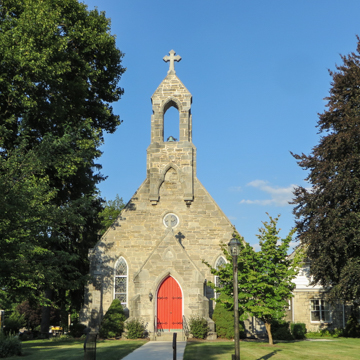This church is named for the saint known as St. James the Greater, but architecturally it follows the example of St. James the Less Church (1846–1848) in Philadelphia, an American version of a thirteenth-century English parish church, St. Michael's in Long Stanton, Cambridgeshire. The design follows the dictates of the Ecclesiologists, a group proposing Gothic as the proper style for church design during the 1840s and 1850s. Bedford's
You are here
St. James Episcopal Church
1865–1866. 311 S. Richard St.
If SAH Archipedia has been useful to you, please consider supporting it.
SAH Archipedia tells the story of the United States through its buildings, landscapes, and cities. This freely available resource empowers the public with authoritative knowledge that deepens their understanding and appreciation of the built environment. But the Society of Architectural Historians, which created SAH Archipedia with University of Virginia Press, needs your support to maintain the high-caliber research, writing, photography, cartography, editing, design, and programming that make SAH Archipedia a trusted online resource available to all who value the history of place, heritage tourism, and learning.















